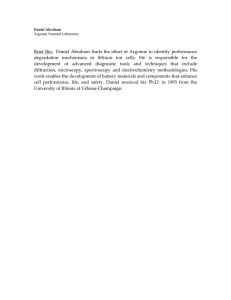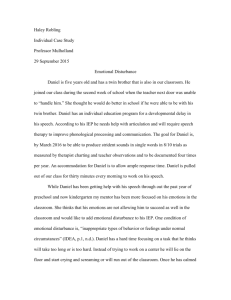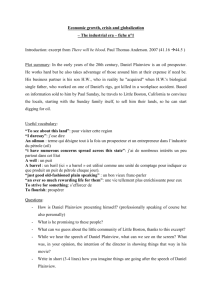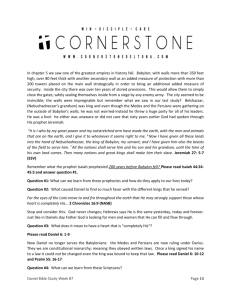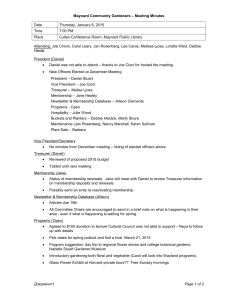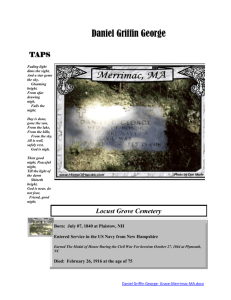Session PowerPoint
advertisement
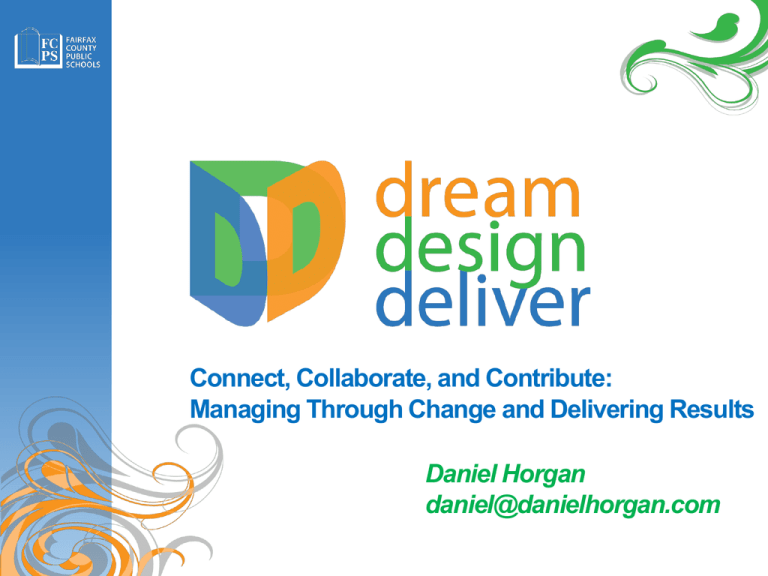
Connect, Collaborate, and Contribute: Managing Through Change and Delivering Results Daniel Horgan daniel@danielhorgan.com 4’ 4’ 4’ Connect the dots using only four straight lines without lifting your pen off of the paper. Zoom (1995) Author: Istvan Banyai, Hungarian artist “The single most important lesson I learned in 25 years talking every single day to people, was that there’s a common denominator in our human experience. The common denominator I found in every single interview is we want to be validated. We want to be understood. I’ve done over 35,000 interviews in my career. And as soon as that camera shuts off, and inevitably in their own way, everyone asks this question: ‘Was that okay?’ I heard it from President Bush, I heard it from President Obama, I’ve heard it from heroes and from housewives, I’ve heard it from victims and perpetrators of crimes. I even heard it from Beyonce in all her Beyonce-ness… They all want to know: ‘Was that okay? Did you hear me? Did you see me? Did what I said mean anything to you?’” ~Oprah Johari Window Model © Alan Chapman 2003 www.businessballs.com Stephen Covey’s Proactive vs. Reactive Model Elements of Effective Partnerships © Daniel Horgan 2013 “Design thinking recognizes that everyone has a story. To design for them, you need to collect their stories.” ~Anonymous Step 1: Design a better wallet. Step 1 (design thinking style): Design something useful and meaningful for your partner – You are NOT designing a wallet. Start by gaining empathy through interviewing your partner. Ask lots of questions…WHY? Dig deeper! Step 2 (design thinking style): Inventory things they are trying to do (NEEDS). Inventory ways they want to feel (INSIGHT / MEANING). Define a problem statement: [Name] needs a way to ______ in a way that makes them feel ____. Step 3 (design thinking style): Sketch 3-7 ways to meet your partner’s needs. Step 4 (design thinking style): Share your solutions and capture feedback. Step 5 (design thinking style): Synthesize learning. Reflect on new insights gained and redefine a problem statement. Step 6 (design thinking style): Generate a new solution. Sketch it. Step 7 (design thinking style): Build a prototype of your new solution. Step 8 (design thinking style): Share your prototype with your partner. Capture feedback. -What worked? -What could be improved? -Questions? -Ideas? © Cory Ford Stanford University Death Valley Death Valley – Spring 2005 “…Death Valley isn’t dead. It’s dormant. Right beneath the surface are these seeds of possibility waiting for the right conditions to come about…if the conditions are right, life is inevitable. The real role of leadership in education…is not and should not be command and control. The real role of leadership is climate control, creating a climate of possibility. And if you do that, people will rise to it and achieve things that you completely did not anticipate and couldn’t have expected.” ~Sir Ken Robinson Daniel Horgan daniel@danielhorgan.com 412-848-2521 (cell)
